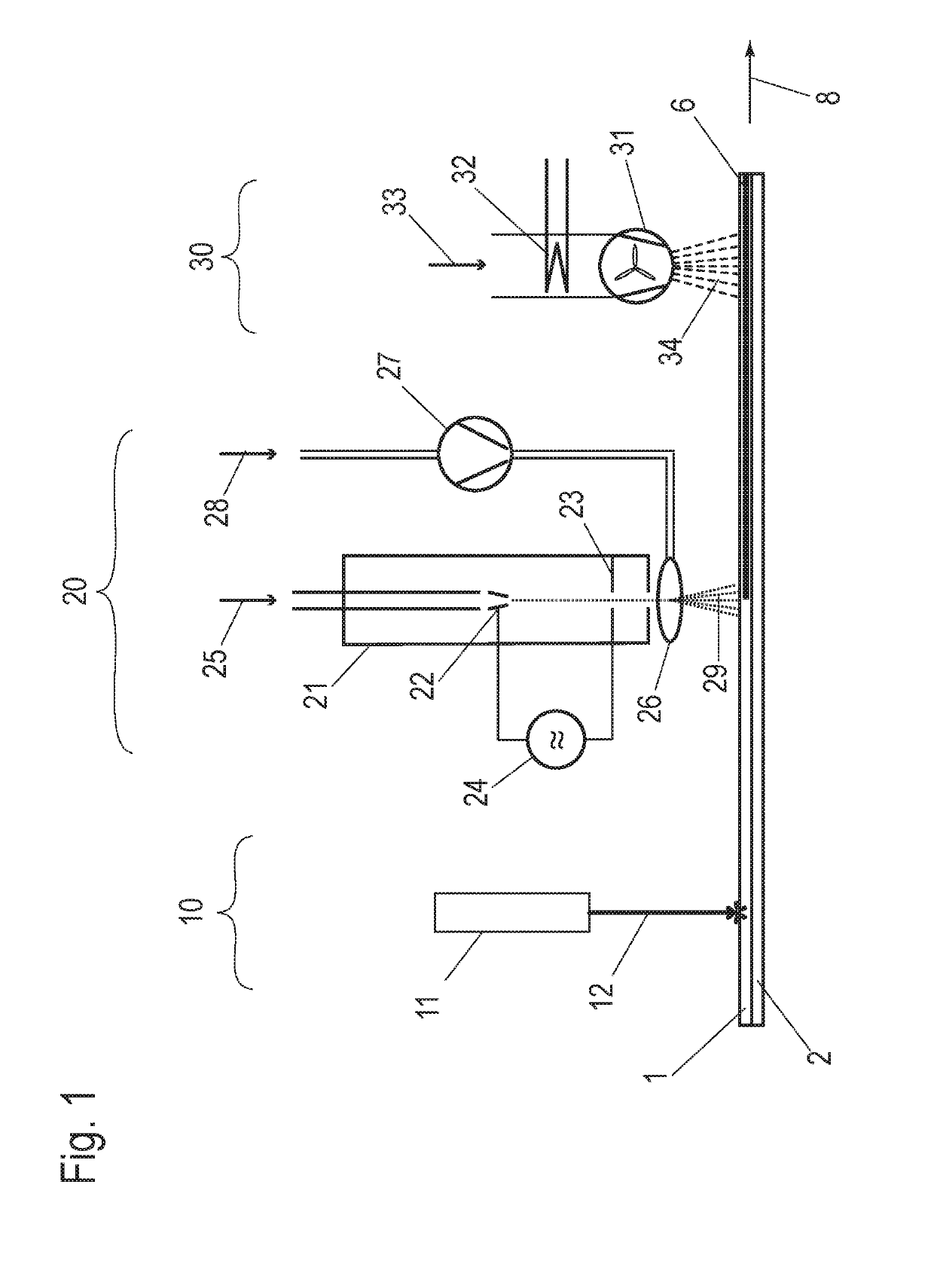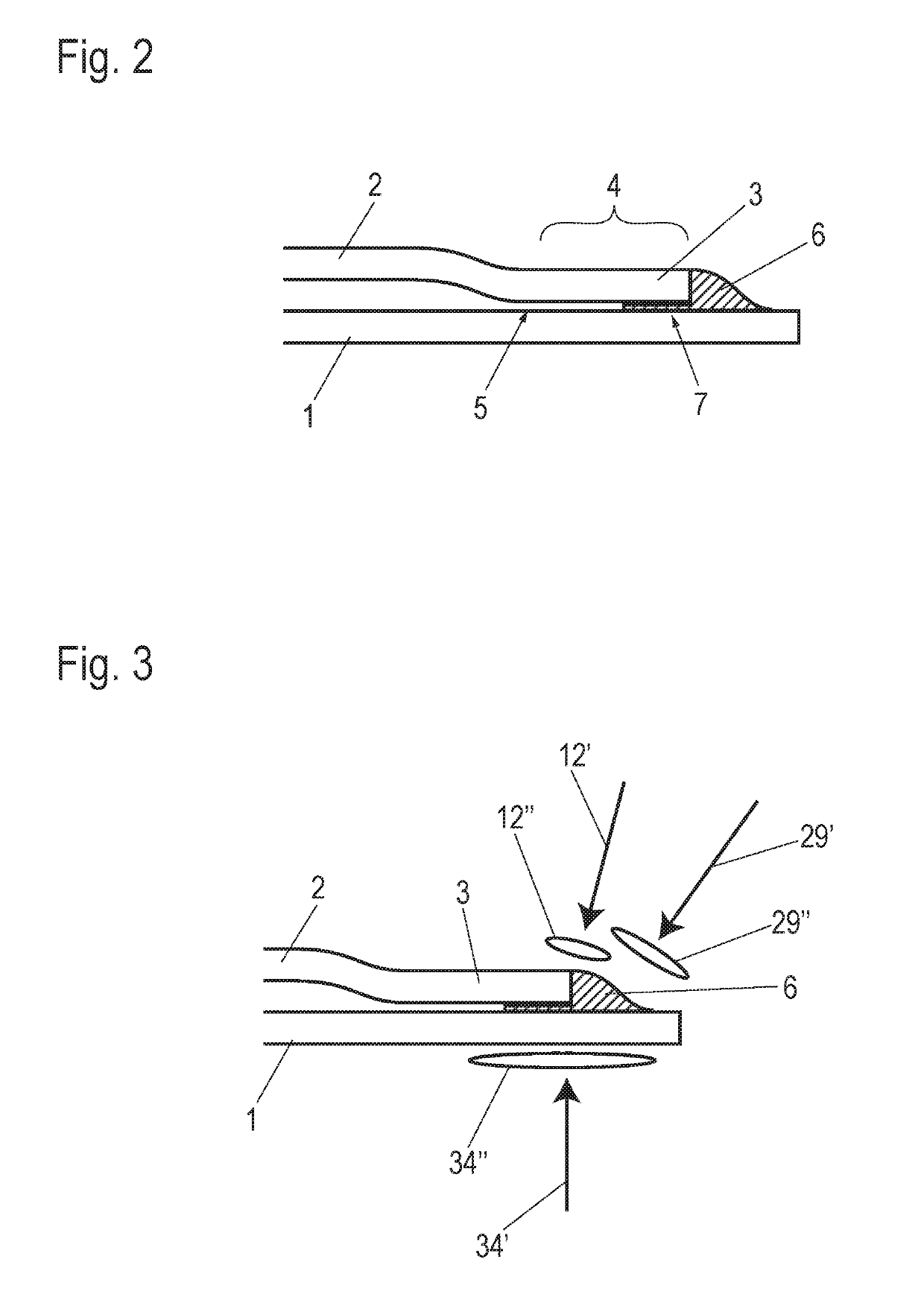Method and device for sealing a joint gap
a joint gap and sealing technology, applied in the direction of sealing apparatus, machines/engines, manufacturing tools, etc., can solve the problems of not being able to penetrate into the gap between the sheets, significant material saving and thus also cost and weight, and non-thixotropic polymer materials in the form of applied pastes or the like are not or only very difficult to dose and process, so as to prevent corrosion of the joint gap, good adhesion of the applied polymer particles, and effective sealing
- Summary
- Abstract
- Description
- Claims
- Application Information
AI Technical Summary
Benefits of technology
Problems solved by technology
Method used
Image
Examples
Embodiment Construction
[0022]FIG. 1 schematically illustrates an exemplary embodiment of a device for applying a joint gap seal. The figure shows the device in a side view, wherein some elements are shown in sectional views to illustrate their internal structure.
[0023]The device processes a joined arrangement of at least two sheets lying on top of each other, a first sheet 1 and a second sheet 2 arranged on top of it. For this purpose, the arrangement of the two sheets 1, 2 moves relative to the device as indicated by a movement arrow 8. The movement arrow 8 indicates a feed direction of the arrangement of the two sheets 1, 2 relative to the device. In an alternative configuration, the device can be moved instead of the arrangement.
[0024]The arrangement of sheets 1, 2 processed by the device is illustrated in an example in a sectional drawing in FIG. 2. The section is executed in a plane perpendicular to the display plane of FIG. 1. It shows the first sheet 1, which is the lower one in FIG. 2, on which th...
PUM
| Property | Measurement | Unit |
|---|---|---|
| particle size | aaaaa | aaaaa |
| diameter | aaaaa | aaaaa |
| temperature | aaaaa | aaaaa |
Abstract
Description
Claims
Application Information
 Login to View More
Login to View More - R&D
- Intellectual Property
- Life Sciences
- Materials
- Tech Scout
- Unparalleled Data Quality
- Higher Quality Content
- 60% Fewer Hallucinations
Browse by: Latest US Patents, China's latest patents, Technical Efficacy Thesaurus, Application Domain, Technology Topic, Popular Technical Reports.
© 2025 PatSnap. All rights reserved.Legal|Privacy policy|Modern Slavery Act Transparency Statement|Sitemap|About US| Contact US: help@patsnap.com


